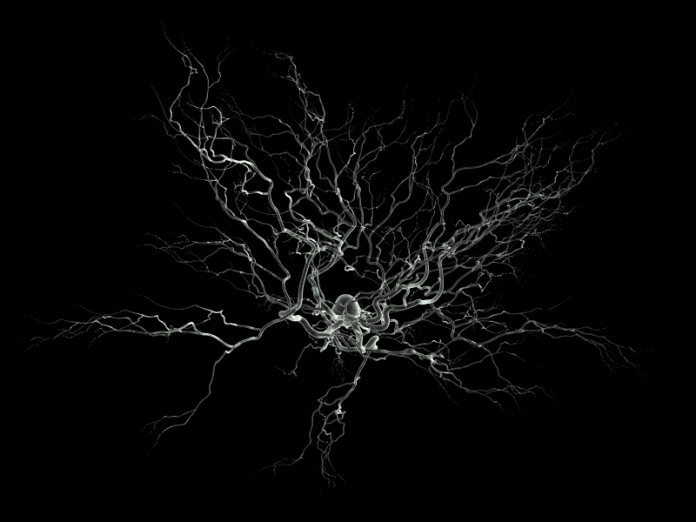Scientists have developed a 3D bioprinting platform that assembles functional човековите neural tissues. The progenitor cells in the printed tissues grow to form neural circuits and make functional connections with other neurons thus mimicking natural brain tissues. This is a significant progress in neural tissue engineering and in 3D bioprinting technology. Such bioprinted neural tissues can be used in modelling човековите diseases (such as Alzheimer’s, Parkinson’s etc.) caused due to impairment of neural networks. Any investigation of disease of brain requires understanding how the човековите neural networks operate.
3D биопечатење е адитивен процес каде што соодветен природен или синтетички биоматеријал (биоинк) се меша со живи клетки и се печати, слој-по-слој, во природни ткивни-три-димензионални структури. Клетките растат во биоинкот и структурите се развиваат за да имитираат природно ткиво или орган. Оваа технологија најде апликации во регенеративно medicine for bioprinting of cells, tissues and organs and in research as model to study човековите тело ин витроособено човековите нервен систем.
Проучување на човековите nervous system faces limitations due to unavailability of primary samples. Animal models are helpful but suffer from species-specific differences hence the imperative of ин витро models of the човековите nervous system to investigate how the човековите neural networks operate towards finding treatments for diseases attributed to impairment of neural networks.
Човечки neural tissues have been 3D printed in the past using stem cells however these lacked neural network formation. The printed tissue had not shown to have formed connections between cells for several reasons. These shortcomings have been overcome now.
In a recent study, researchers chose fibrin hydrogel (consisting of fibrinogen and thrombin) as the basic bioink and planned to print a layered structure in which progenitor cells could grow and form synapses within and across layers, but they changed the way layers are stacked during printing. Instead of traditional way of stacking layers vertically, they chose to print layers next to another horizontally. Apparently, this made the difference. Their 3D bioprinting platform was found to assemble functional човековите neural tissue. An improvement over other existing platforms, the човековите neural tissue printed by this platform formed neural networks and functional connections with other neurons and glial cells within and between layers. This is the first such case and is a significant step forward in neural tissue engineering. Laboratory synthesis of nerve tissue that mimics brain in function sounds exciting. This progress will certainly help researchers in modelling човековите diseases of brain caused due to impaired neural network to better understand the mechanism for finding a possible treatment.
***
Референци:
- Кадена М., и сор 2020. 3D биопечатење на нервни ткива. Advanced Healthcare Materials Volume 10, Issue 15 2001600. DOI: https://doi.org/10.1002/adhm.202001600
- Јан Ј., и сор 2024. 3D bioprinting of човековите neural tissues with functional connectivity. Cell Stem Cell Technology| Volume 31, Issue 2, P260-274.E7, February 01, 2024. DOI: https://doi.org/10.1016/j.stem.2023.12.009
***






































